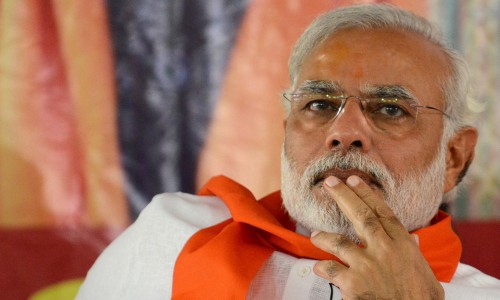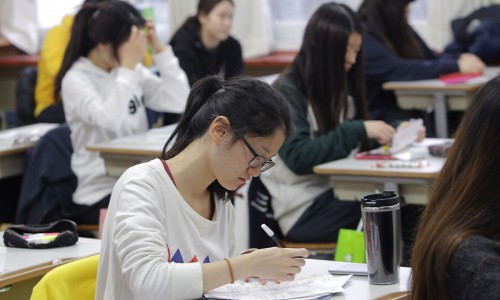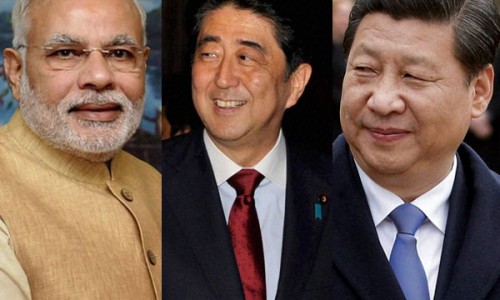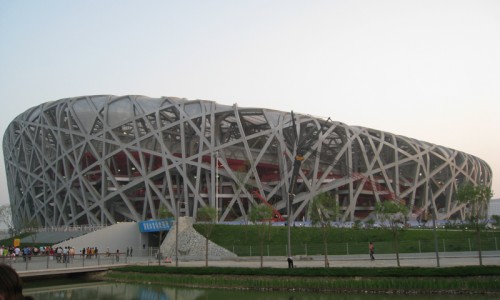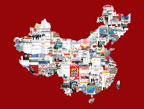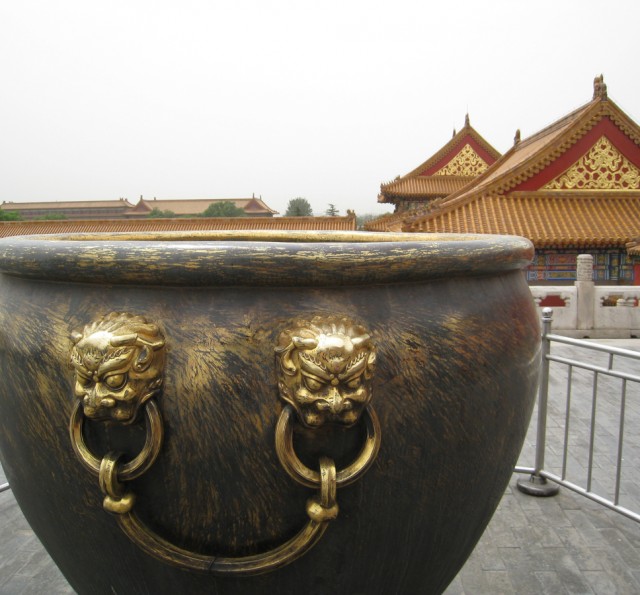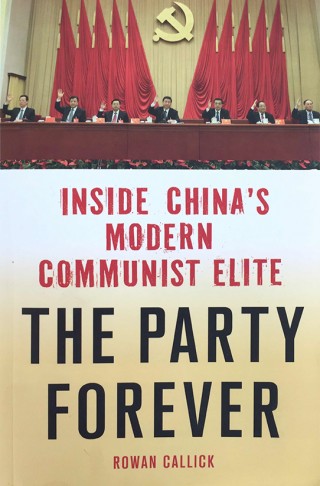Published on Melbourne, 2009
A friend in this room told me yesterday that what’s happening right now between China and Australia is “quite amazing.”
It isn’t entirely unpredictable, I’d say, but yes, extraordinary.
So a few words first about what is happening.
Obviously, the context is crucial: both the global context, and that of the increasingly complex relationship and the history between our countries.
Neither of us are suffering for the same reason as the Americans and Europeans, whose finance sectors have collapsed. But both of us are applying the same solutions, local stimulus packages.
China is suffering as the world’s factory, because the world no longer has the money or the appetite to buy its products. It is also suffering because over the last five years and despite its leaders’ rhetoric about shifting from the pace of growth to the quality of growth, it has been unable to take the tough decisions and implement the reforms needed to broaden the base of its economy, to build domestic demand and to create a services sector commensurate with its size; it is about 34 per cent of its economy, less than half the comparative size of Australia’s services sector.
ANZ’s chief economist Saul Eslake told me recently: The Chinese are giving serious thought as to whether re-creating that model of export-led growth is what they want. It would be in the interests of the world as a whole if China concentrated on consuming more and the US concentrated on producing more.”
And prominent independent economist Andy Xie, based in Shanghai, says in China’s most influential business magazine, Caijing, that a full global recovery requires China and the US to complete sufficient structural reforms to create a sustainable growth cycle. He warns that the stimulus packages of the two countries, including inventory restocking, “will not address the structural imbalance within or between them. Indeed, the stimulus prolongs the unbalanced growth model that got us into trouble in the first place”. Xie says that “for the global economy to find a new and sustainable growth path, the necessary changes are that the US expands production and China expands consumption”. He says that the US is stimulating consumption again, and China investment again, because they have the systems to do so.
Australia is suffering from some similar challenges. Its governments, both state and federal, have in recent years failed to follow through earlier reform periods, and productivity has not improved adequately. Its export performance is inadequate. The drive by Austrade to boost the number of firms exporting, produced disappointing results. And of course we are suffering from commodity prices falling with global demand, including from China.
We have invested insufficiently in infrastructure, while China has been rushing since Deng Xiaoping ushered in 30 years ago the glorious kai fang, open door, era, to catch up in infrastructure and other ways with the rest of East Asia, to make up for those wasted decades under Mao Zedong.
Australia became, following its own kai fang epoch launched by Bob Hawke 26 years ago, an open economy thriving on trade. We still don’t do enough of it, but what there is, pushes our growth along.
And what we do with China, has come to matter crucially.
Asialink, the Melbourne Institute of Applied Economic and Social Research at Melbourne University, and PricewaterhouseCoopers have together developed an Asia engagement index, launched last Friday by Trade Minister Simon Crean, which starts to quantify such relationships.
The index assembles and calibrates data about trade, investment, research and business development, education, tourism, migration and humanitarian assistance. It is anchored in 1990, when the measures of engagement with the 25 leading countries in Asia and also with the rest of the world, are each assessed at 100 points.
Since then, Australia’s engagement with Asia has multiplied four times, that with the rest of the world three times, and that with China an astonishing 16 times.
This China connection is not totally new, of course. That cherished Australian expression “dinkum” may have derived from a corruption of the description used by Chinese miners, in the mid 19th century Victorian gold rush, for “real gold”: jin zhen.
It was these rushes that galvanised Chinese interest in the country, and forged a contact that ebbed and flowed over the following century and more, but has re-emerged, in momentous mutual interest.
In the last financial year, China bought 14.9 per cent of our exports, making it the second biggest buyer after Japan. And exports contributed about 20.7 per cent of Australia’s gross domestic product.
Commodities dominate our exports, especially iron ore, almost half the total $27 billion. We import $31 billion products on the other side, a more diverse menu with clothing, telecommunication gear, computers, toys and sports goods the biggest categories.
Treasurer Wayne Swan told senior cadres at the central party school, where I was present last year, that Australia’s mining output – “important as it is” – accounts for just 7 per cent of gross domestic product, about the same share as 20 years ago, while farm output comprises about 3 per cent.
Mr Swan said: “We also make fare machines for Beijing’s subways, we make synthetic turf for your sports fields, we make solar heating for your remote areas. We sell you cosmetics, integrated circuits, water treatment systems, piston engines and mining software.”
Our services trade is puny in comparison with our trade in goods, comprising just $4.4 billion exports, overwhelmingly students and tourists – vital components for our future relationship of course – and we import just $1.4 billion services.
If we were to lose a full 25 per cent of our exports to China, a terrible blow, after growth of 18 per cent in the last year, this would cost us about 0.6 per cent of our GDP.
HSBC’s John Edwards told me: “If we look at exports alone and China’s influence on us solely through exports, then exports to China have accounted for, say, 2.5 per cent of Australian output in the last three or four years. China’s contribution is primarily through the mining sector. But that has contributed only 7.6 per cent of output growth in the last five years, about the same as its share of GDP.” He says the story in export volume terms has consistently fallen short of expectations – underlining the need, I believe, for Chinese inputs now.
The main impact of China on our economy has come through pushing up the terms of trade – the ratio of the prices of our exports to those of our imports. It has pushed up the prices of exports and pushed down the prices of our imports. And China’s demand has also forced Japan, Korea, Taiwan and other buyers to pay more for the same commodities. Its competitiveness in manufacturing similarly forced other manufacturers to lower their prices. But now, Eslake anticipates, Australia’s terms of trade will return to what they were in 2004 or 5.
What of the investment front, now the focus of so much attention? Australia has only modest investments in China, $5.2 billion in 2007, making us the 14th largest investor. Our biggest single investment in the Chinese world generally, is the $1.2 billion Macquarie paid three years ago for 40 per cent of Taiwan’s third largest cable TV company.
Again in 2007, China had $6.2 billion invested in Australia, making it the 17th largest. This latter figure has soared, thanks to the investment in mining companies, principally in Western Australia.
Investment is increasingly the fulcrum around which other economic engagement, including trade, hinges. China needs to invest offshore for many reasons, including to set its capital to work to compensate for its growing demographic challenges due to the one-child policy.
A good example is the $750 million joint venture coal gasification project between Australia’s HRL – the successor body to the former State Electricity Commission of Victoria – and Harbin Power. They have proposed to develop together a 500 megawatt power station in Victoria’s LaTrobe Valley – a template for similar generators in China, and the first new base load station in Victoria since 1990. Four months ago, Zhang Ping, the immensely powerful director of the National Development and Reform Commission, spent a day in the LaTrobe Valley talking over the deal. Funding from Chinese sources is expected soon.
A recent trip to Australia by Lou Jiwei, executive chairman of sovereign wealth fund China Investment Corporation, at the invitation of the Future Fund, is likely to lead to some of CIC’s $200 billion assets being deployed here. And Chinese infrastructure investment in Western Australia is set to follow too.
Most of us in this room, are well aware of this drive. I’m a strong supporter of increased mutual investment. And I believe that this requires a calm and clear understanding of our overall relationship.
It has been characterized too much in the past as “complementary.” That sort of implies, in this case, that we are the source of raw materials and China of manufactures. But both of us have much more to offer than that. We actually compete of course in some areas; the important thing, is to set up an environment for fair competition, so the best supplier gains the bigger market share in both countries. We need to shift our relationship beyond complementarity.
As my friend Paul Glasson, based in Shanghai, told me yesterday: “Australia has the resources China wants, the quality is good, the prices are low right now. The countries are close, relations are good.” Clearly, China’s State Council believes it’s picked the bottom of the market, the optimum time to pick up distressed assets, and that may well come to prove true. We must hope so, because that means the pain will start to diminish.
But this is too important a relationship, and our resources too vital a strategic asset, to leave to panicked shareholders and financial institutions. For Australia is dealing here, essentially, not with diverse private firms with conflicting interests but with a cohesive state which believes rightly, as Deng said, that “development is the irrefutable argument.”
The Chinalco-Rio Tinto deal’s raison d’etre was explained in Global Times, owned by party mouthpiece People’s Daily, in an article by Professor Liu Jipeng and Liu Yan, a researcher at the National Development and Reform Commission: “Chinalco’s purchase has successfully prevented the merger of Rio and BHP, broken the monopoly of multinational giants, and protected our nation’s core interests.
“It has also explored a new path for the globalisation of state owned enterprises, illustrating the capacities of government business.”
It is crucial for Australia beyond the cognoscenti in this room to understand the nature of this “new path.”
Australia can do great things with China. But to build a full, considered partnership, Australia needs equivalent access in China. And Canberra can, if it chooses, play a central role in obtaining the guarantees that will keep Australia in the centre of the frame, not sidelined as a price taker.
That task of understanding, the building block essential for good, constructive relations, made harder, because except for ANZ, almost no major company has direct Chinese or even Asian experience on its board or top management. This is a challenge for those of us in this room who are shareholders or work in the corporate sector. This must change. The China expertise must be there at the heart of the operation.
Fortunately, we do have in Lu Kewen a prime minister with such experience and understanding. This should help the federal government’s own process of reviewing its China strategy.
And that is important because China indeed views this enmeshment as a matter of “core interests.”
Australia needs an informed national debate about where this vital relationship is heading, about where the national interest can be identified.
Such a national approach would likely include Australia’s seeking reciprocal access to invest in China – whether via the languishing free trade agreement talks or some other channel – not least for our vast funds under management.
Zhang Xiangchen, then China’s chief FTA negotiator, told me three years ago that at talks on the prospect of telecommunications investment access a Chinese vice minister said that if his country opened its market completely, ” Australia will kill our industry.” The Australian delegation leader responded, “We are too small to do that.”
Dr Zhang said: “That’s a typical dialogue” in this FTA round. Sadly, it seems to have got little further. Cuts in the Rudd government’s first budget led to the loss at the Beijing embassy of the position of an FTA staffer.
It became a frustrating feature of my recent life in China, to meet so many smart, often young, dedicated Australians who had invested all their savings and their lives in building operations there, chiefly in services – which is actually Australia’s main business strength – but had to remain below the radar, they could not grow, because there are too many non tariff barriers, too many obstacles, they lack the capacity to develop as the market and their talents would otherwise see happen.
But we also have so much on which we agree, so much in common.
In global terms, both our countries depend on open borders, on freeing up global trade, and we can fight on this front together. We need to be telling our friends in the US Congress right now that their ‘buy American’ campaign is futile and damaging, and telling our friends in India that banning Chinese toys for six months is similarly self-lacerating.
The final thing I want to say, is that what will underpin and strengthen crucially what I’ve been describing so far, a strong, mutual-interests based relationship, is to broaden it out and deepen it far beyond trade and investment.
I am here to tell you that I am unashamedly in thrall to the Chinese aesthetic. I believe that our peoples share especially closely, many human dimensions, including strong individualism and a certain sense of humour. It is crucial that we work on these person to person links, that we make them easier and more relaxed. We in Australia can contribute, for instance, by sending more of our children to study in China. And China can open its broadcasting to our excellent Australia Network TV station for Asia.
To return to Lu Kewen. We can overdo it, though he is himself careful not to. But he does present an especially welcome face and more importantly voice to our Chinese friends. I recall watching the last federal election on TV in Beijing, with a group of Chinese diplomats and academics. They were agog at the way it happened, the civility, the boisterousness of the crowds, the presence of the families on stage. One woman watcher gasped when Rudd finally appeared: “He’s so young!”
We can all celebrate, and build on, such connections.

